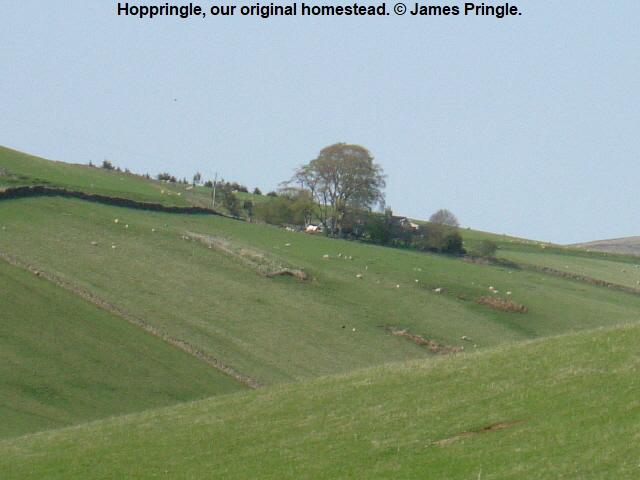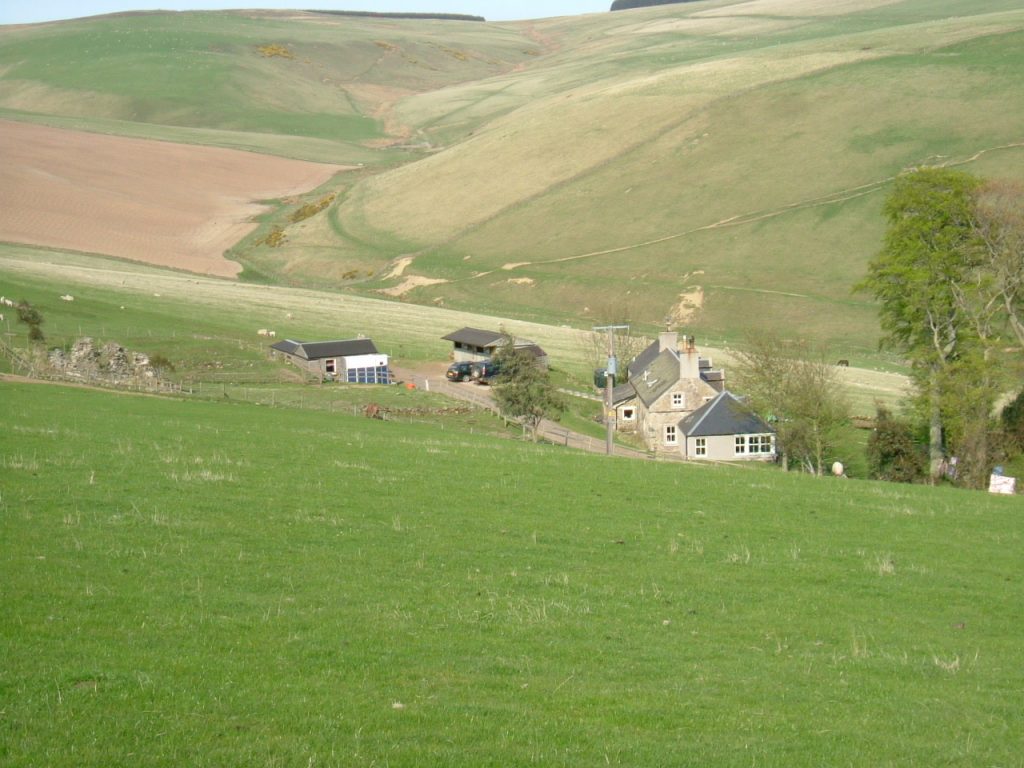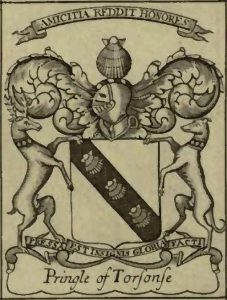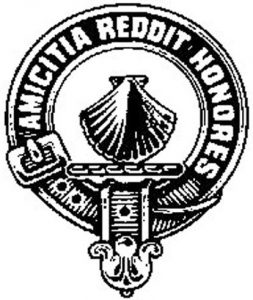The Early History of the Hoppringills of Hoppringill
The Early History of the Hoppringills of Hoppringill
By James M. Pringle. Website Owner.
There has been so much incorrect speculation on the origin of the Pringle family, its true history needs to be clarified. The surname Pringle is a placename, named after a place called “Hoppringle”, the original homestead of the Pringle family. The early form of the name was Hoppringill, eventually it became shortened to Pringle. The first Pringle recorded in historical records was Robert de Hoppryngil. He appears as a witness to a gift to the Augustinian Hospital of Soltre (now called Soutra Aisle) in a charter contained in the Chartulary of Soltre c.1265-1275 which was confirmed by King Alexander III of Scots (1249-86) in the 13th century. His grandson Elias de Hoppringill was stated to be a tenant of the Bishop of St Andrews in the Ragman Rolls of 1296. We have no historical evidence to support the idea that Robert, the first known Pringle, may have been a pilgrim who came back from the Crusades and was granted the Hoppringle lands by the bishop for his troubles. The suggestion that Pringle is a corruption of ‘Pilgrim’ or its Latin equivalent ‘Pelerin’, is equally fallacious.
Pringle origins prior to this time were unknown until recently, when members of the Clan Pringle Association undertook DNA tests. The deep ancestry DNA tests show that the ethnic origin of the Pringles is the Haplogroup R1b-S21 Germanic (also known as R1b-U106), proving that the Pringles are descended from the Northumbrian Angles and not from other ethnic groups such as the Ancient Britons, Caledonian Picts, Gaelic Scots or Norse Vikings. This corroborates the author Alexander Pringle’s opinion that all three syllables of the surname ‘Hope-ring-hill’ (the haven on the round hill) are all from Old English and not from any other language.
Historically the Scottish Borders area was settled by the Votadini tribe of the Ancient Briton’s, until the first Angles invaded and settled in the Borders in the early 6th century. The first Angle king of Bernicia (Lothians and Borders) was King Ida, who is said to have obtained the throne in about 547. King Ida’s grandson Aethelfrith united the kingdoms of Bernicia and Deira into the kingdom of Northumbria in about the year 604. The Borders remained in Angle possession until Malcolm II, King of Scots defeated the Northumbrians at the Battle of Carham in 1018 taking the Scottish frontier down to the River Tweed. The Angle residents of the Borders then paid homage to their new Scots King and were naturalised as Scots subjects.
From 1099, when David the youngest son of King Malcolm III was made Prince of the Cumbrians (he later became King David I of Scots (1084-1153)), he became pivotal in the unwritten history of the early Hoppringills. The Principality of the Cumbrians then consisted of both Strathclyde and the Scottish Borders, making Prince David the feudal overlord of the Hoppringills. David is believed to have founded Roxburgh Castle (just outside Kelso in the Borders) and it seems to have been the favourite residence of many of the early Scottish Kings before the Scottish War of Independence. David also founded Selkirk Abbey in 1113 (which moved to Kelso in 1128), Jedburgh Abbey in 1118, Melrose Abbey in 1136 and Newbattle Abbey in 1140.


These lay within the Lordship of Stow in Wedale, in the Regality of St. Andrews, in the County of Edinburghshire (now called Midlothian). It was King David I of Scots who gave the Lordship of Stow in Wedale to the Bishop of St Andrews (later Archbishops) and from that time on the Hoppringills were subject to the feudal lordship of the bishops.
Immediately to the east of the Hoppringill lands lay the Lordship of Lauderdale. King David I of Scots also created the feudal Lordship of the Regality of Lauderdale and gave it to Hugh de Moreville (1138-1162), whom he also made the Constable of Scotland. The Lordship of Lauderdale and the office of Constable of Scotland passed to his son Richard de Moreville (1162-1189), and after him to Alan of Galloway, who was the son of Helena, daughter of Richard de Moreville. The Lordship of Lauderdale then passed through Alan’s daughter Dervorguilla, to his grandson King John Balliol. After the Scottish War of Independence King Robert the Bruce gave the Lordship of Lauderdale to the Good Sir James Douglas (the Black Douglas). The Lordship of Lauderdale then became one of the subsidiary titles of the Earls of Douglas until their fall in 1455. The Earls of Douglas also possessed the Lordship of the Forest (The Ettrick/Selkirkshire Forest) to the southwest of Hoppringill. So, the Pringles were caught between being vassals of the Crown, the Archbishops of St Andrews and the Earls of Douglas for many years.
The history of the Hoppringills is not recorded during this period. Sir William Wallace is long believed to have been knighted and made Guardian of Scotland in the ‘Kirk o’ the Forest’ (Selkirk) in 1298, and the men of the Forest (the Selkirkshire Forest) are said to have supported him. Perhaps the Hoppringills were amongst them. Robert the Bruce was crowned King of Scotland in 1306. His success at the Battle of Bannockburn in 1314 essentially brought Scottish Independence, and the treaty of Northhampton in 1328 recognized him as King of Scotland and renounced all English claims to overlordship. King Robert died in 1329 and at his request his friend and lieutenant, the ‘Good’ Sir James Douglas, along with seven other knights, set out to bury his heart in Jerusalem in 1330. Sir James died fighting the Moors in Spain at the battle of Teba en-route. His body and King Robert’s heart were found on the battlefield and returned to Scotland for burial. The Pringles were the squires and men-at-arms to the Earls of Douglas, and it is believed that they would have accompanied Sir James to the pilgrim site of Saint James of Compostela in northern Spain. However, only the knights were named, so it is impossible to be sure. Ever since this time however, the Pringles have used the badge of St James (an escallop) as their principal heraldic device.


Since that time Hoppringill men have been squires to each of the nine (Black Douglas) Earls of Douglas. At the same time many Hoppringills were servants in the royal households of James III, IV and V. The chiefs of the name, the Hoppringills of Hoppringill were the only Pringles with land until 1408, when Robert Hoppringill (a younger son of William Hoppringill of that ilk and a Douglas squire) obtained the lands of Pilmuir and Smailholm from Archibald, 4th Earl of Douglas. After the fall of the Black Douglasses in 1455, several Pringles were able to obtain land, forest steads in the Ward of Tweed in the Selkirkshire Forest, of which George Pringle (Douglas squire) was the Master Ranger.
In summary, the Hoppringills should be be viewed in the context of the Scottish Borders and its history. They were not Gaelic speaking kilt wearing Scottish Highlanders but were part of the distinct lowland Scots Borders tradition.
